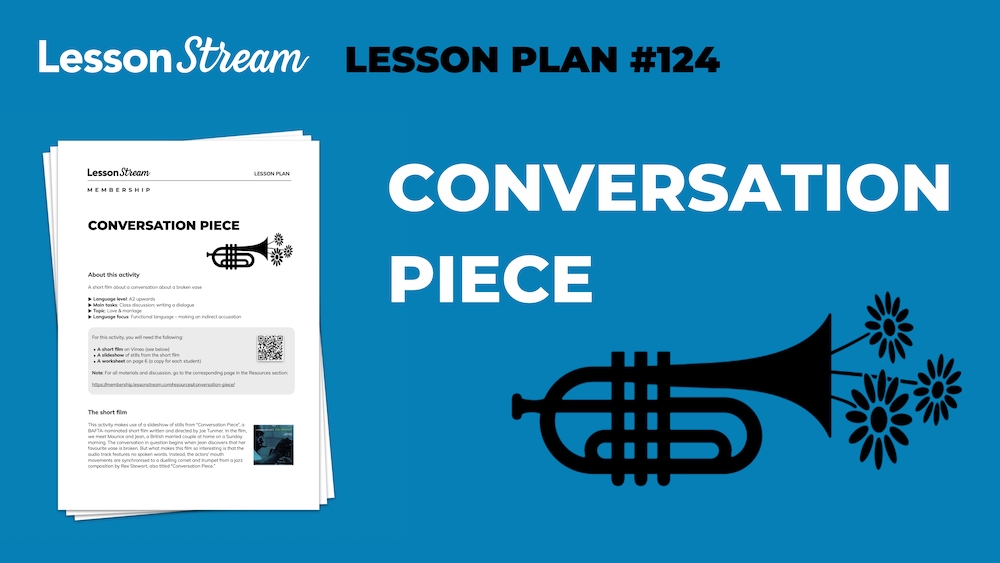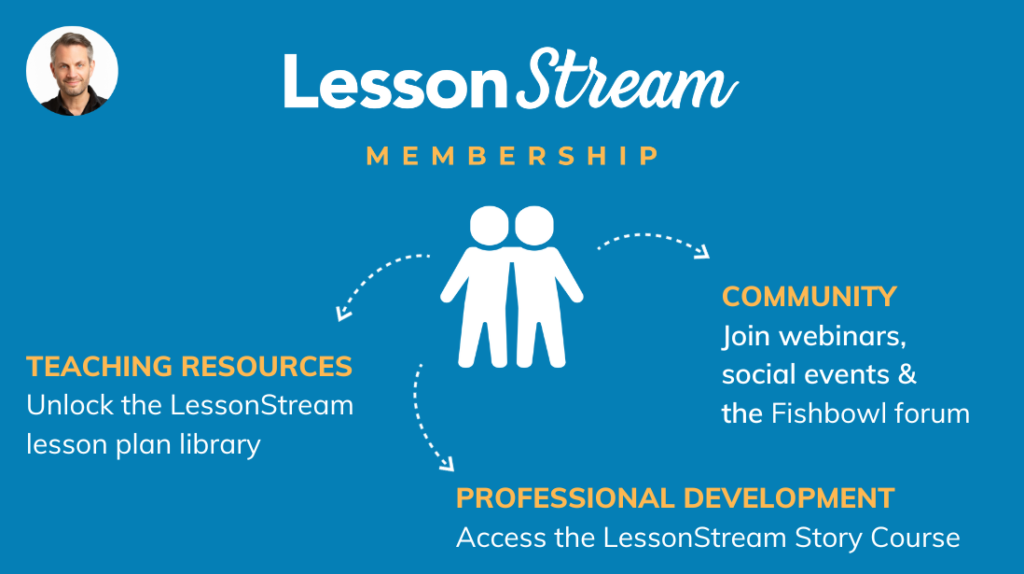Silent viewing is a standard way to use video in the classroom. The idea is simple: the teacher plays the video with the sound down and students have to guess what the characters are talking about, what they are saying, etc. However, as we will see in this post, there is an alternative approach that can be a lot more effective.
Conversation piece
“Conversation piece” is the title of a short film by Joe Tunmer. It provides a great piece of teaching material for the classroom.
It starts with some establishing shots of the interior of a British home.


What sort of person or people do you think live here? And what sort of music or sounds would you expect to hear during these establishing shots?

If we were using this short film in class, we could exploit a silent viewing approach.
This is a standard way to use video in the classroom: the teacher plays the video with the sound down, pauses it at certain moments, and asks questions to get students thinking and speaking (e.g. What are the characters talking about/saying?)
Personally, I never use this technique. My preference is always to create a slideshow of stills (i.e. images) from the video. There are at least two very good reasons for doing this.
ONE. It gives us total control of the exact pause moments
Look at this great detail from the short film. A hand goes into a dressing gown pocket. But what is it going to take out?



It’s a piece of toast. How disgusting!
This is Maurice – the man of the house. And these shots tell us a bit about what kind of man he is.
The hand-to-mouth close-up shots last for just a few seconds in the film. And it would be difficult for a teacher to pause the video at those exact moments.
Stills allow us to solve this problem. They allow us to slow things right down and choose the exact moments that we want to focus on.
TWO. We can break from the chronology of the video
Let me introduce you to Jean – the woman of the house and Maurice’s wife. When I introduce her to students, I like to ask:
- Which room of the house is she in?
- What is she doing there?
- Tell me about her life and her relationship with Maurice.

Since she is in the kitchen (how stereotypical!) most people will assume that she is cooking, preparing food, chopping vegetables, peeling onions, or washing up. But maybe not. She could be fixed to the screen of her mobile phone – watching TikTok videos perhaps?
If we were using a silent viewing approach (i.e. using the whole video), this question would be pointless. The reason is that just a few moments before the above shot, we saw exactly what Jean is doing. She is preparing roast potatoes. It looks like they might be having a Sunday roast.

By changing the order of these two stills, we can make things more interactive for students.
By using stills, we can break from the chronology of the video. It gives us total control. It allows us to tell the story as we want to tell it.
About conversation piece
“Conversation piece” features a jazz piece of the same name. It was recorded in 1966 by cornetist Rex Stewart.

There is something quite special about this jazz track. When you hear it, you will know exactly what I am talking about. And it is something that director Joe Tunmer ingeniously exploits in his short film. There is no surprise that it was nominated for a BAFTA (a British Academy Award)
The teacher’s voice
One last piece of advice about this technique: as well as creating a slideshow of stills from a chosen video, it is important also to consider:
- Additional information to give students
- Questions to ask
- Possible answers that we might get back
In other words, if we want to motivate students to speak, we can’t just expect the material to do the job for us.
It’s the harmony between the material and the teacher’s voice that will pull in the students – a recurring idea in the LessonStream Story Course.
Thank you for reading. And thank you to Joe Tunmer for permission to use these stills from his excellent film.
Jamie 🎺
LessonStream is a community of teachers committed to using story to engage students. Members get instant access to the lesson plan library, the LessonStream Story Course, the Fishbowl forum and regular online social events.




